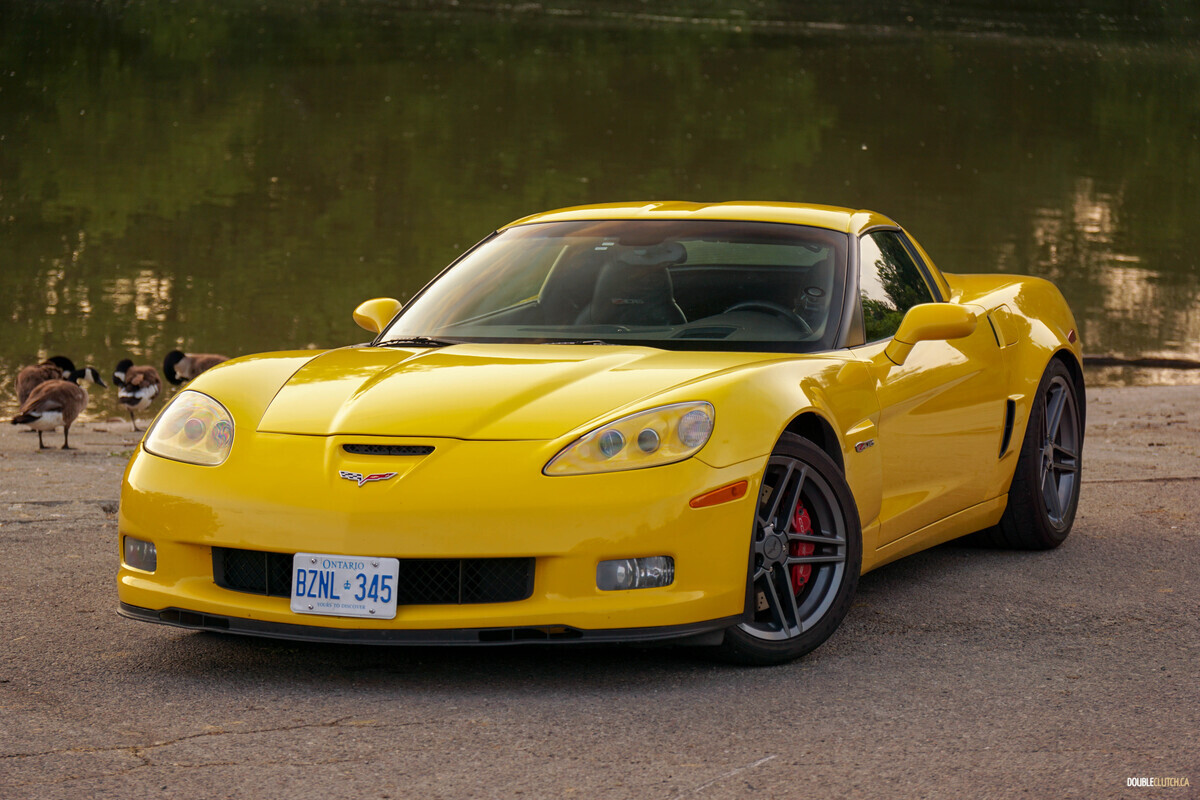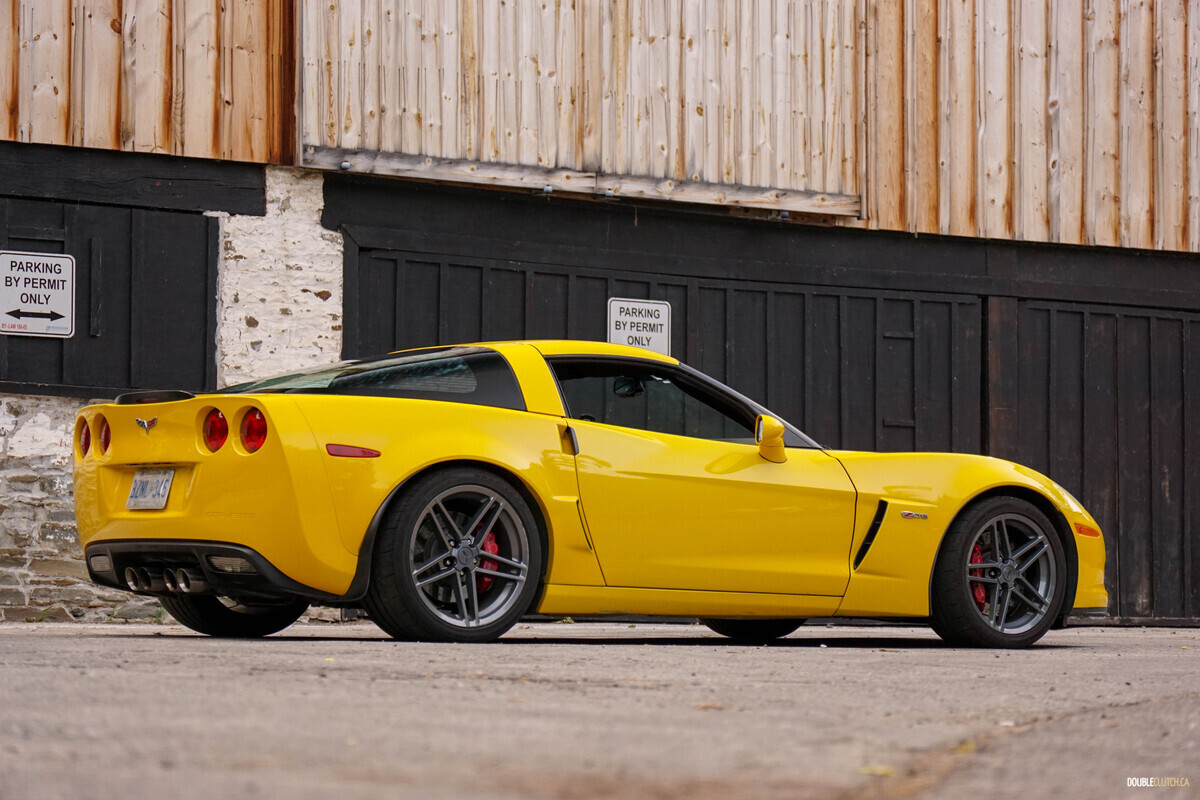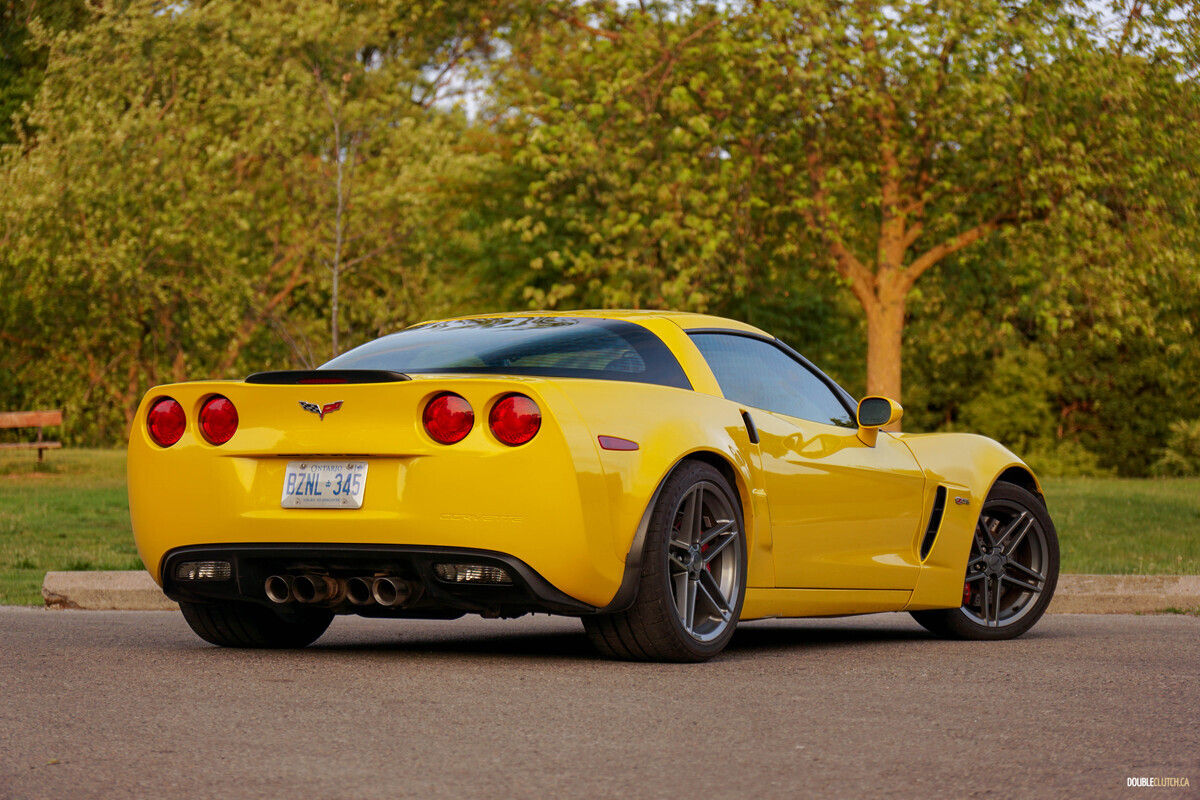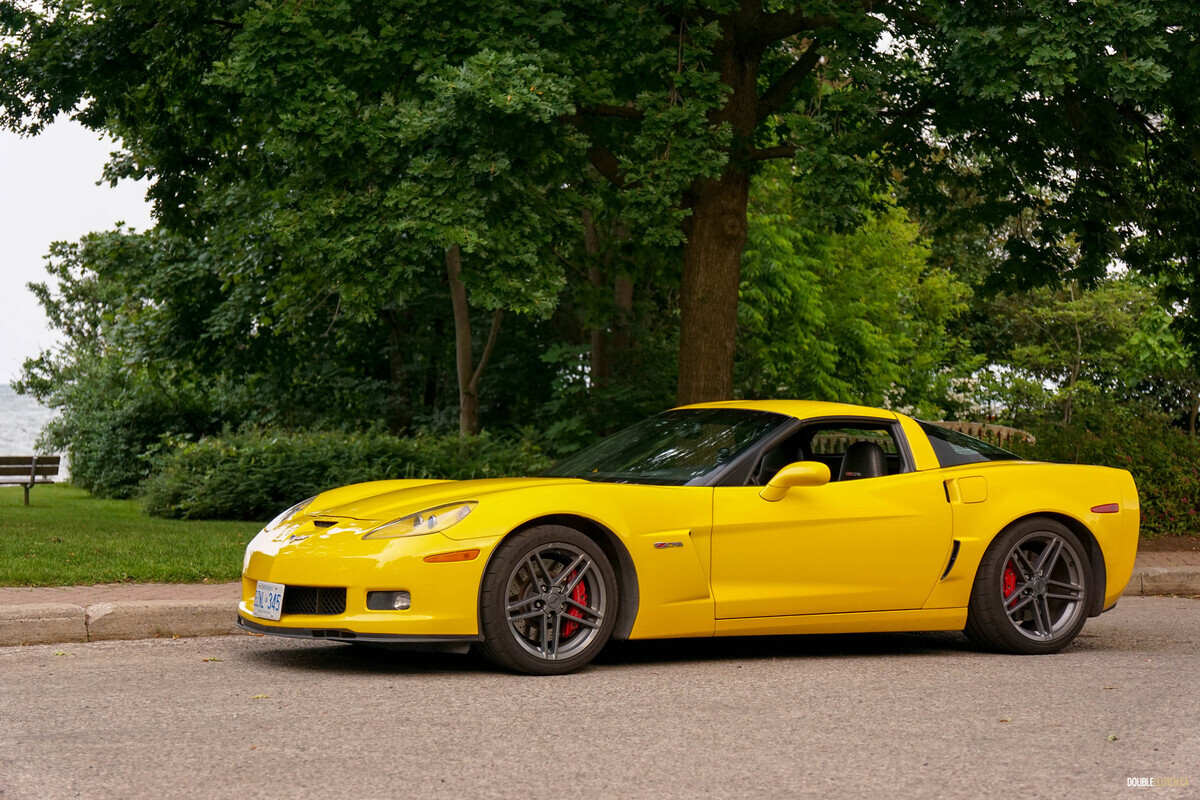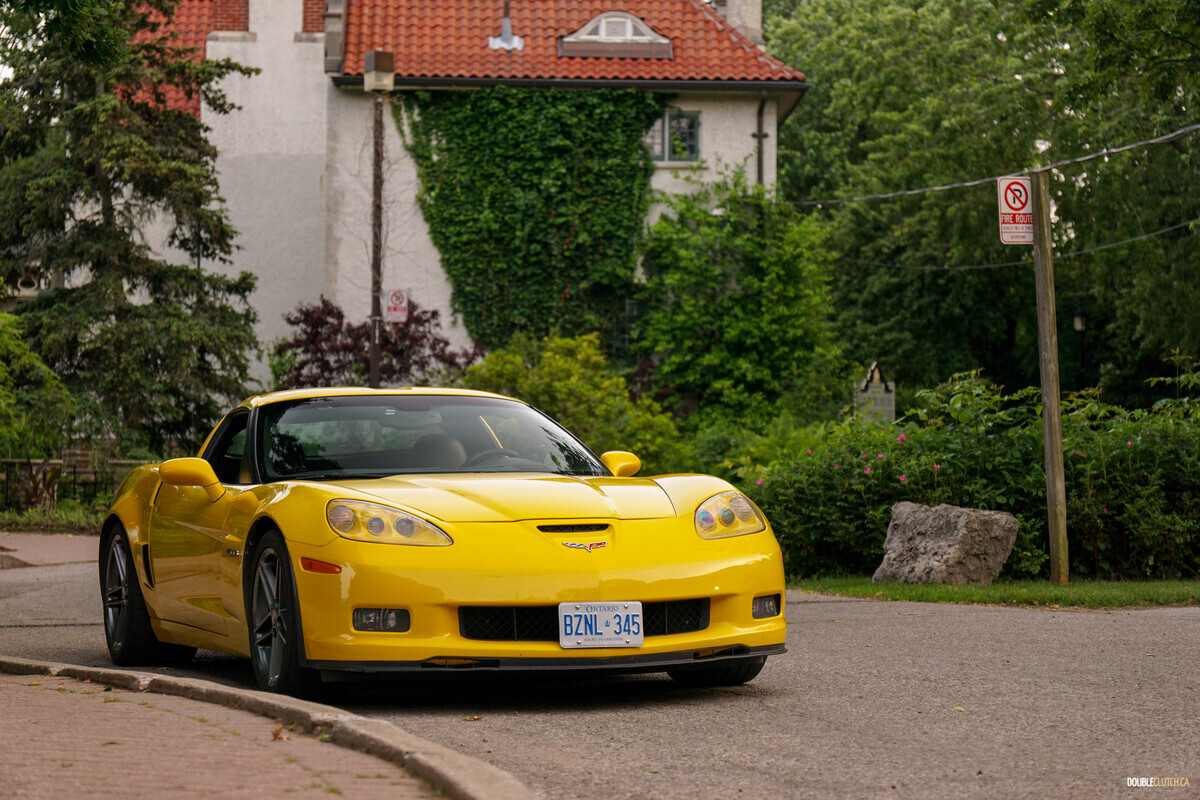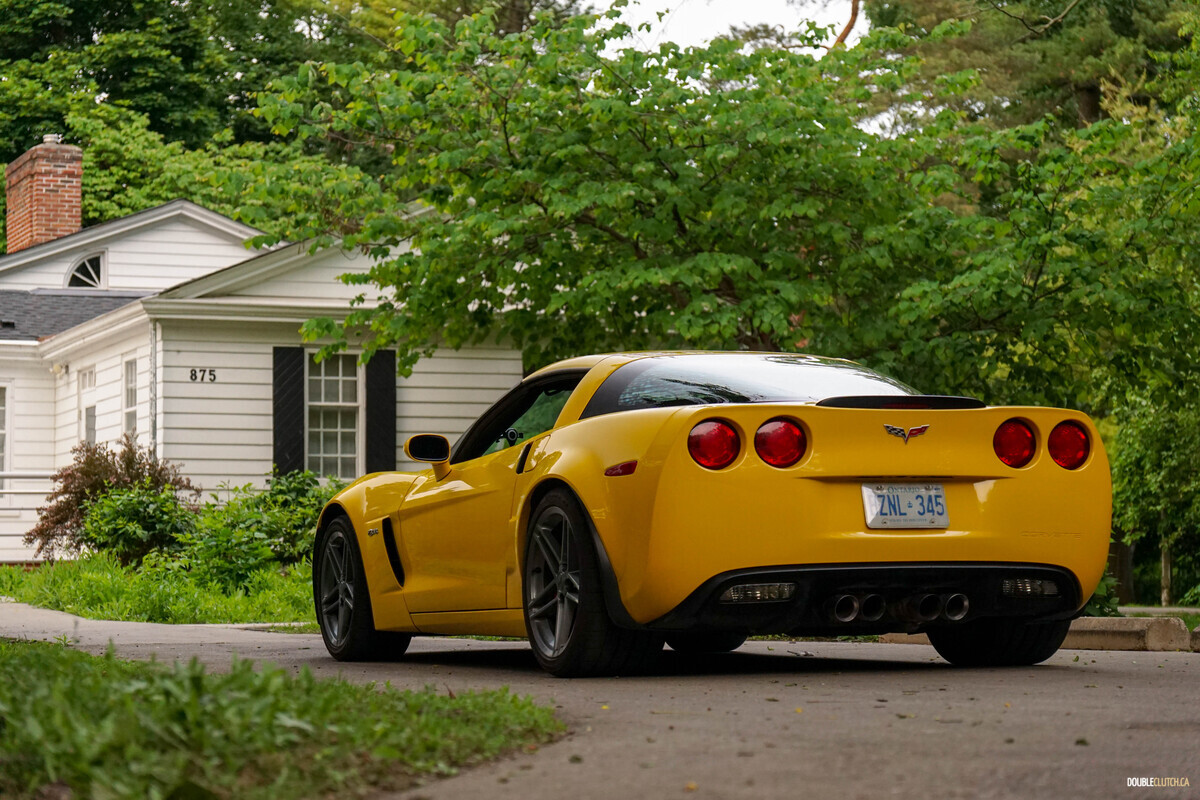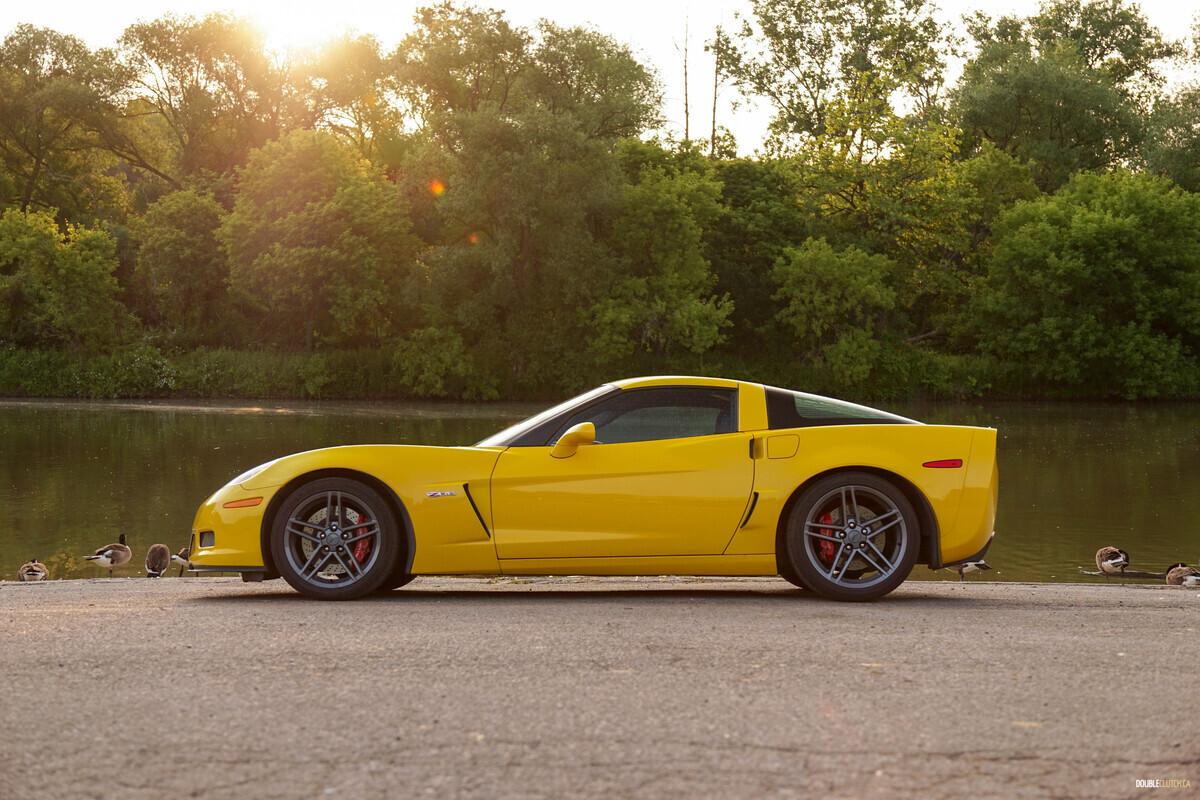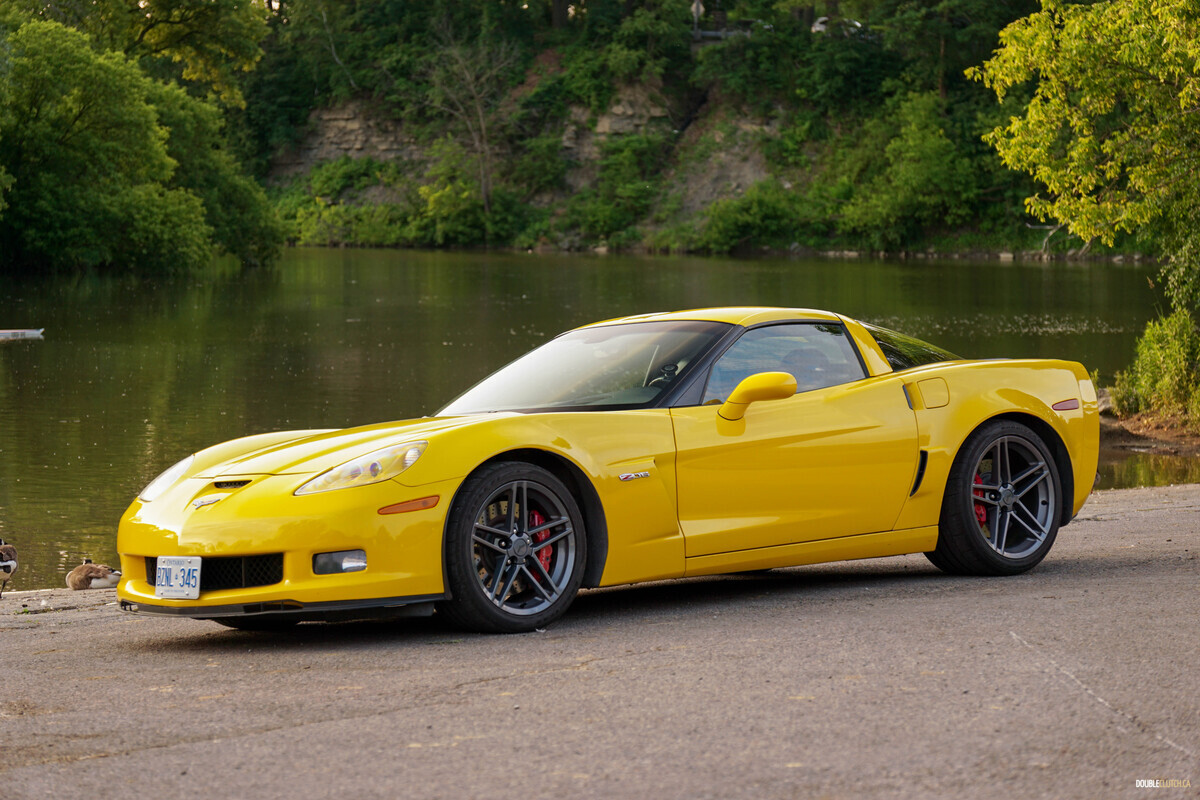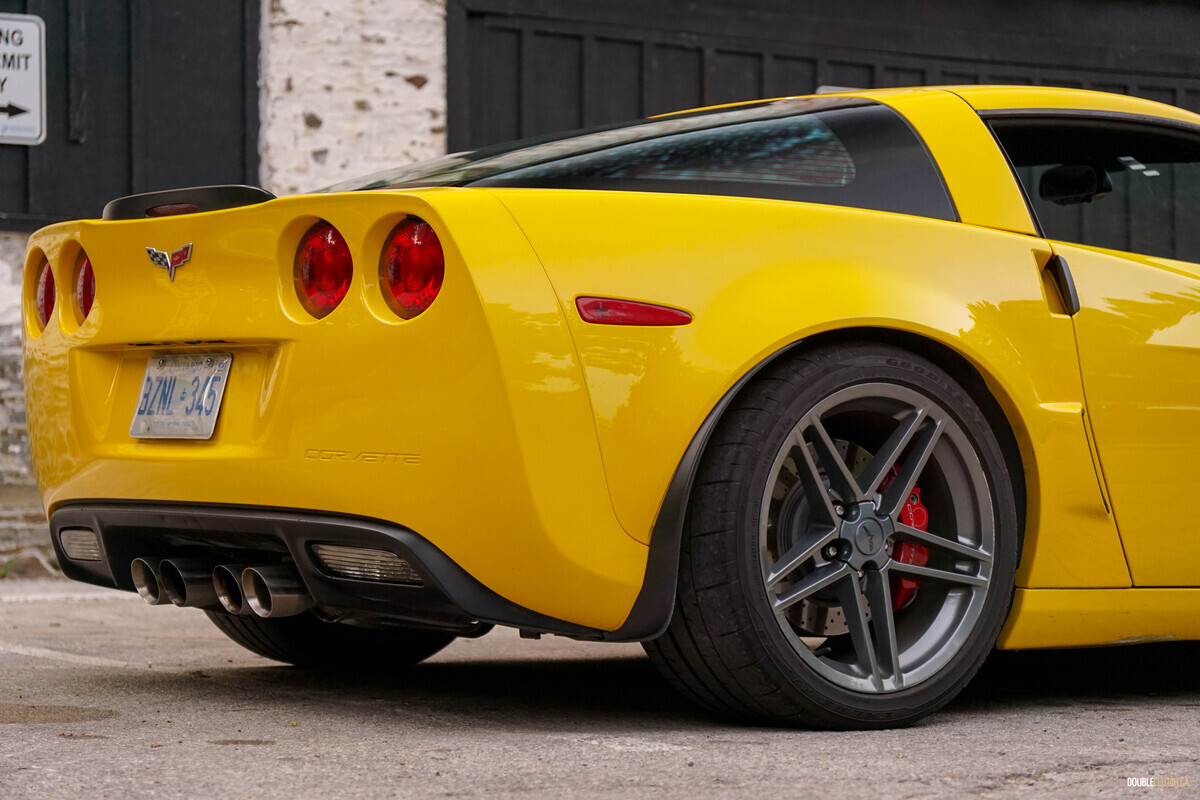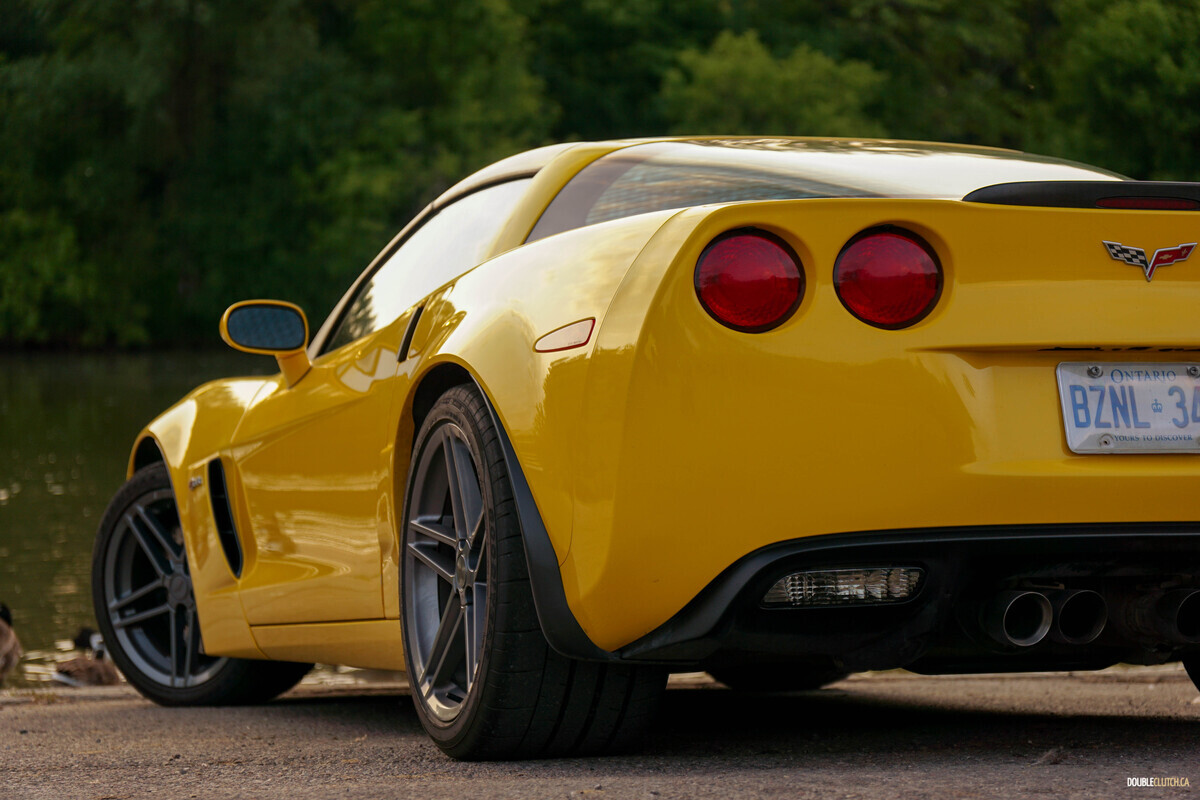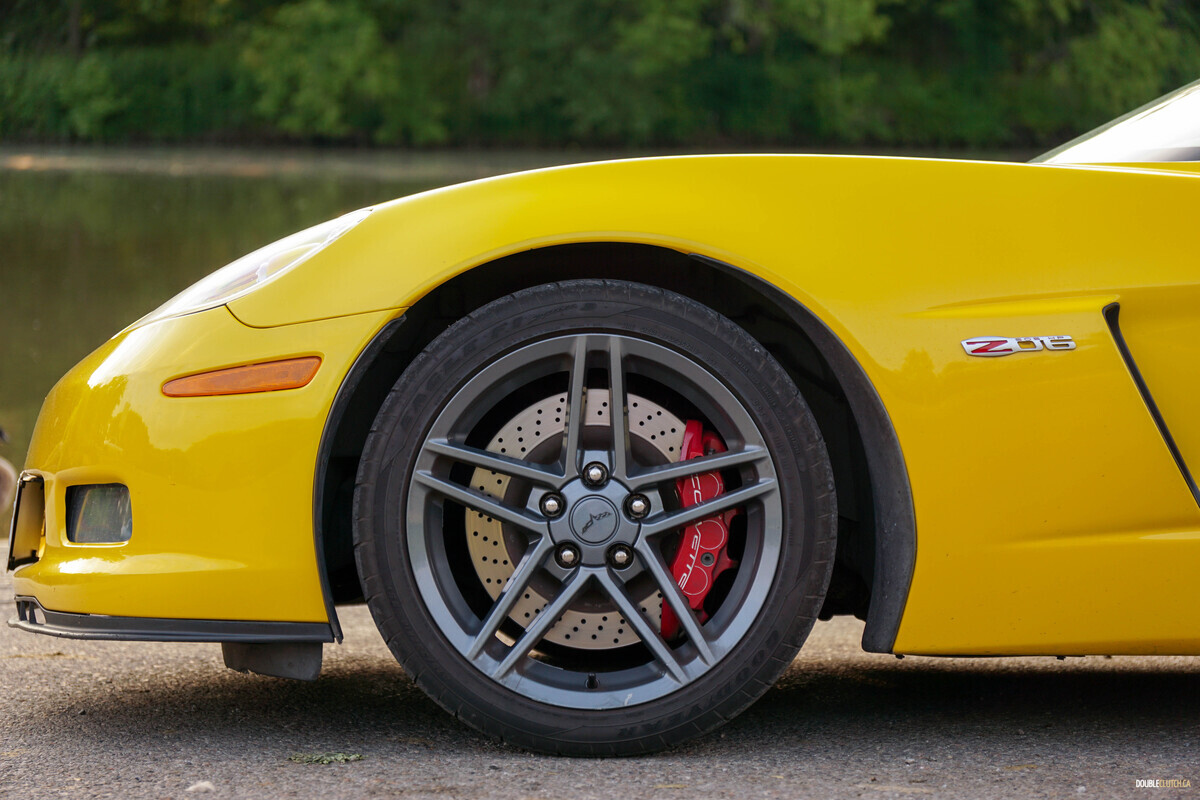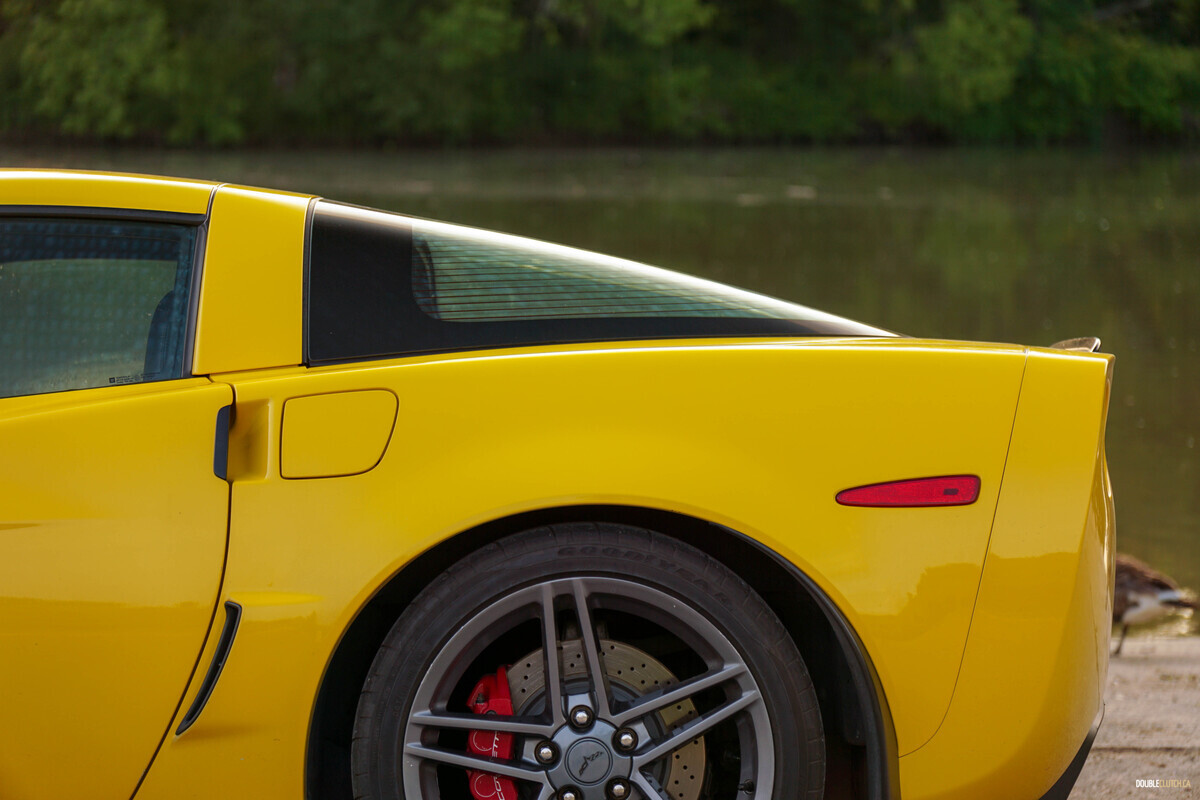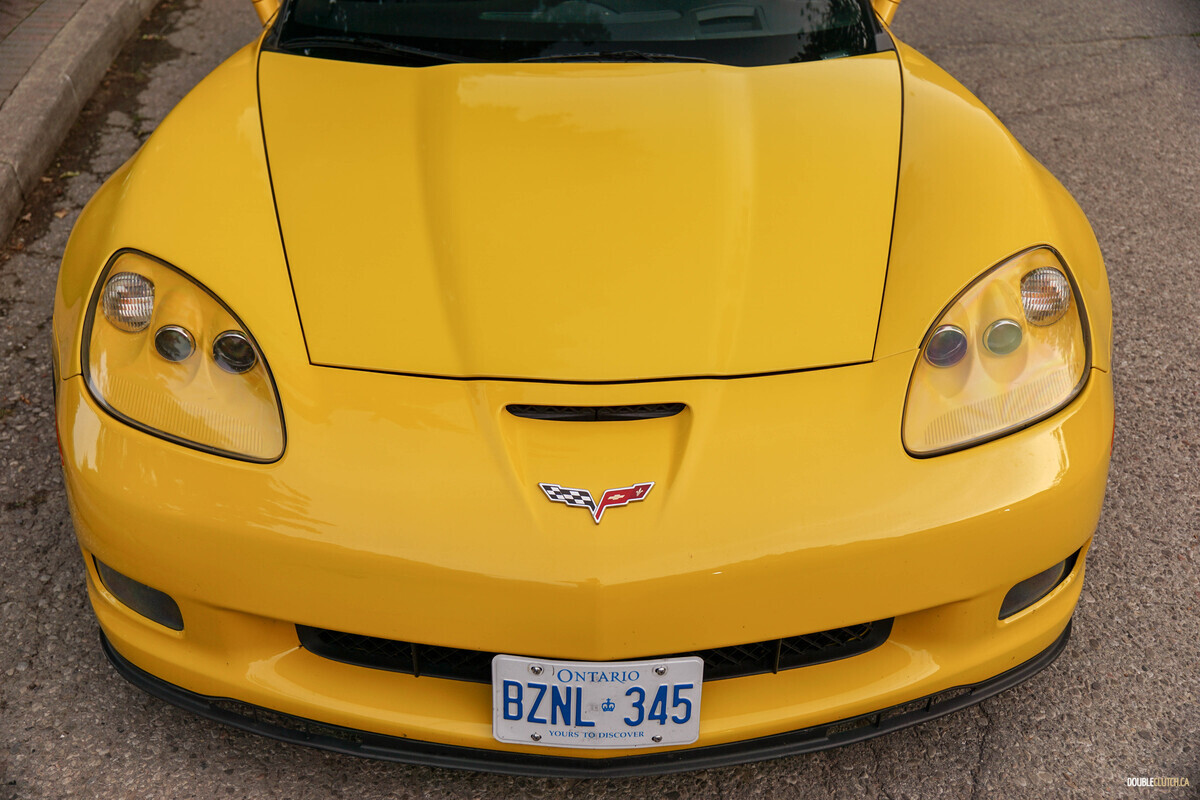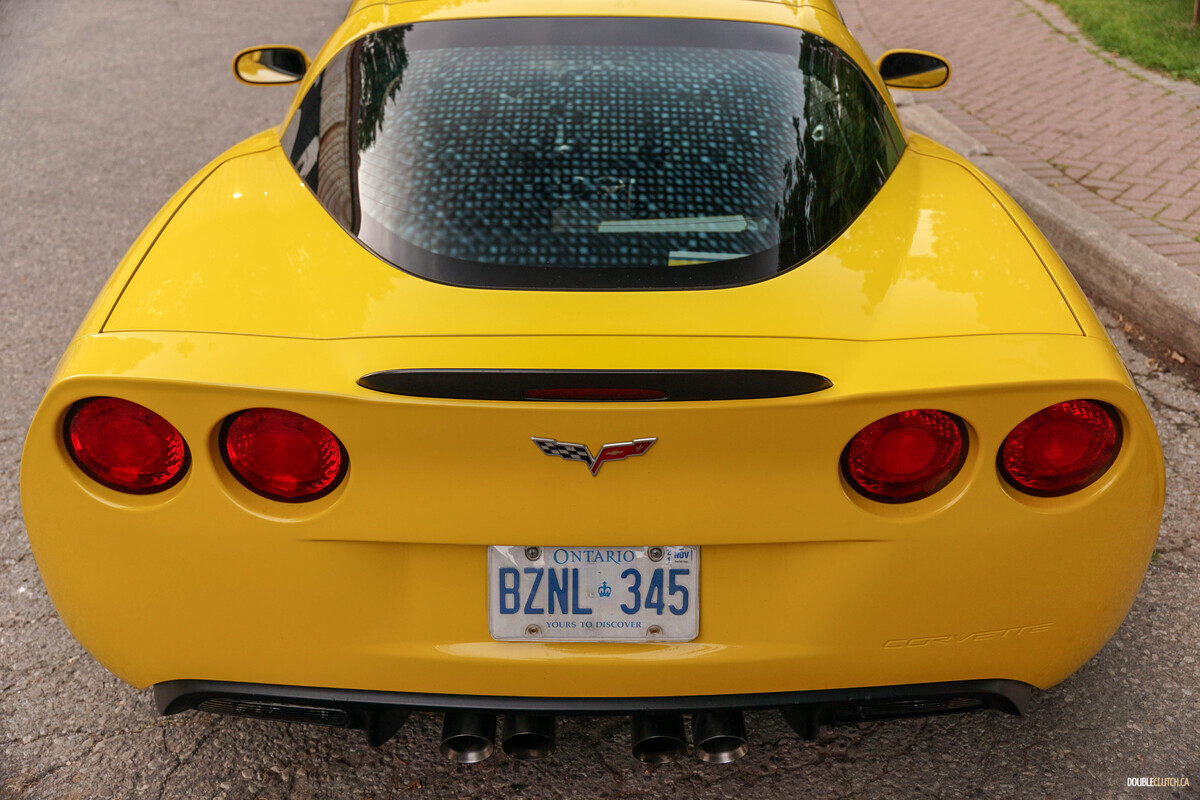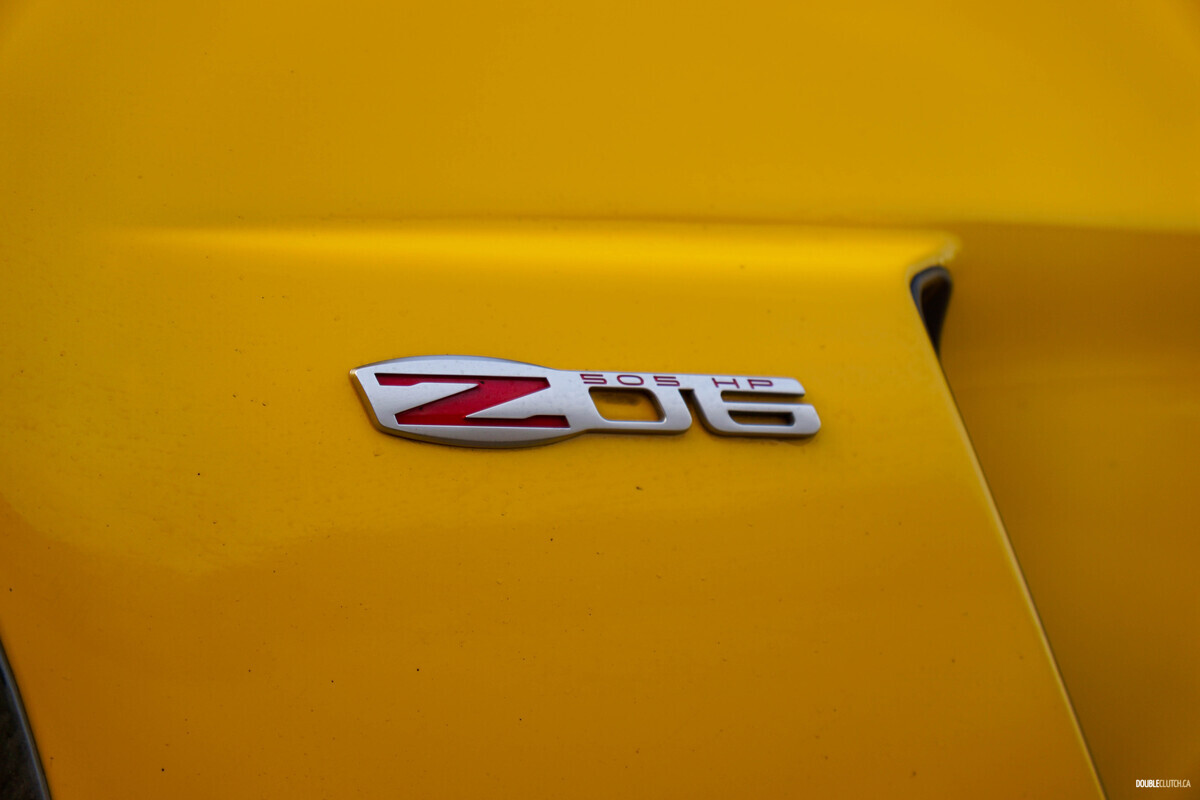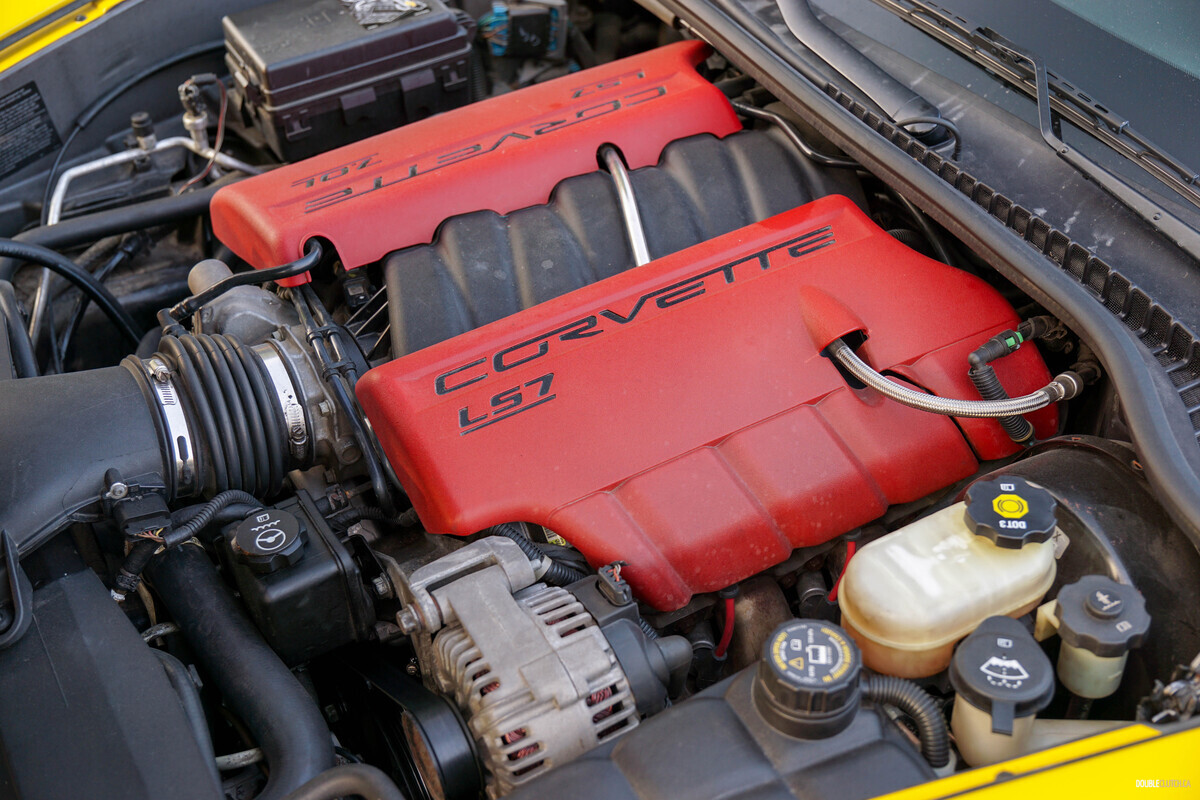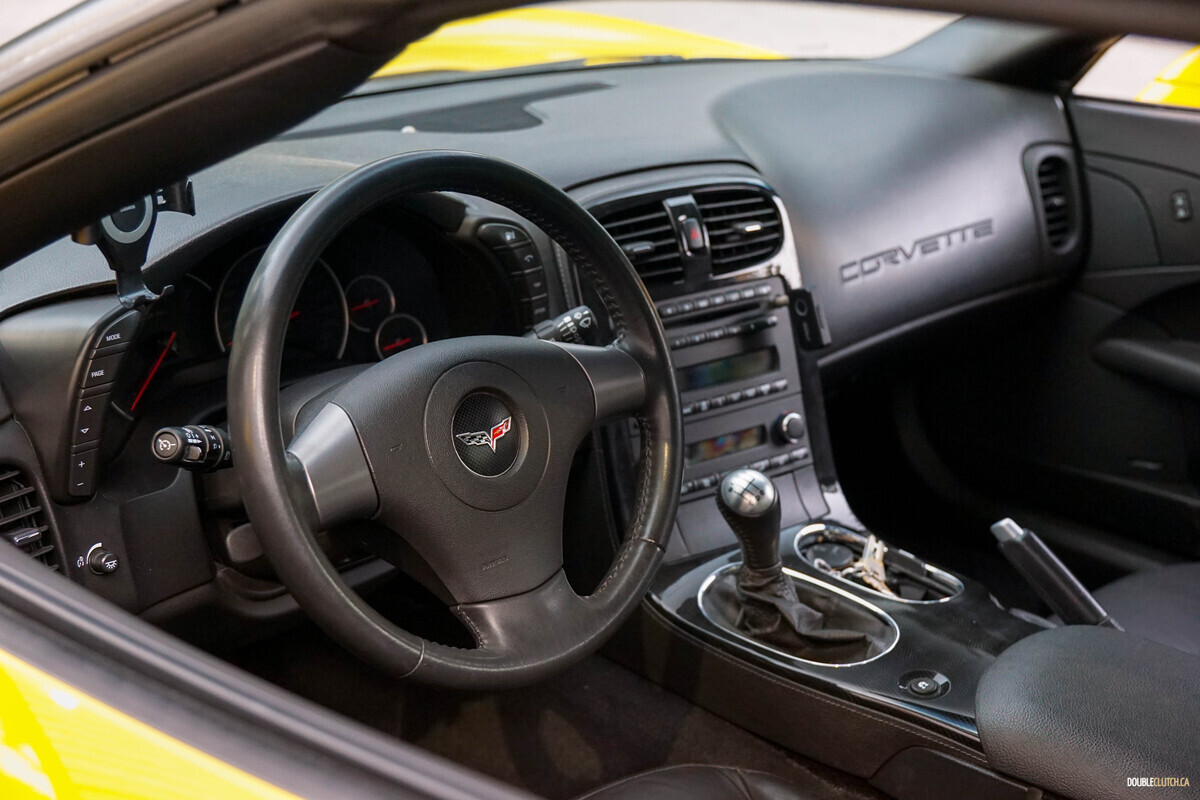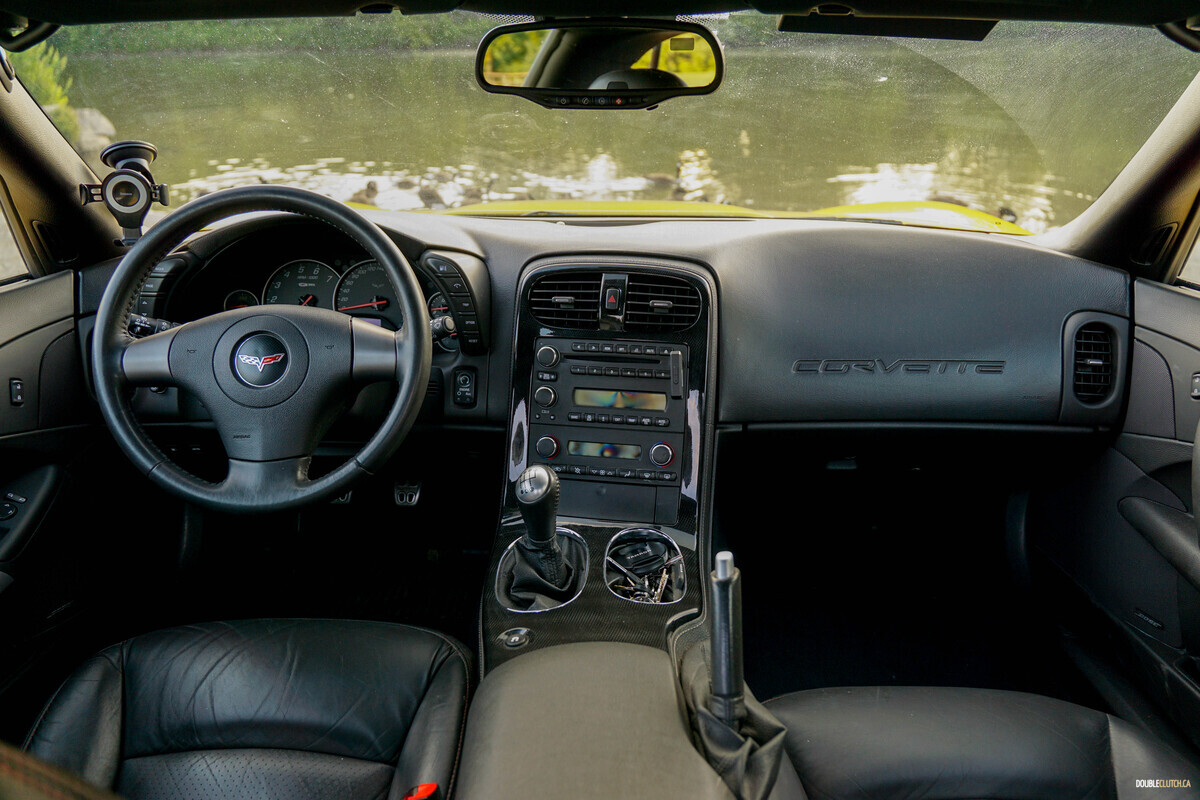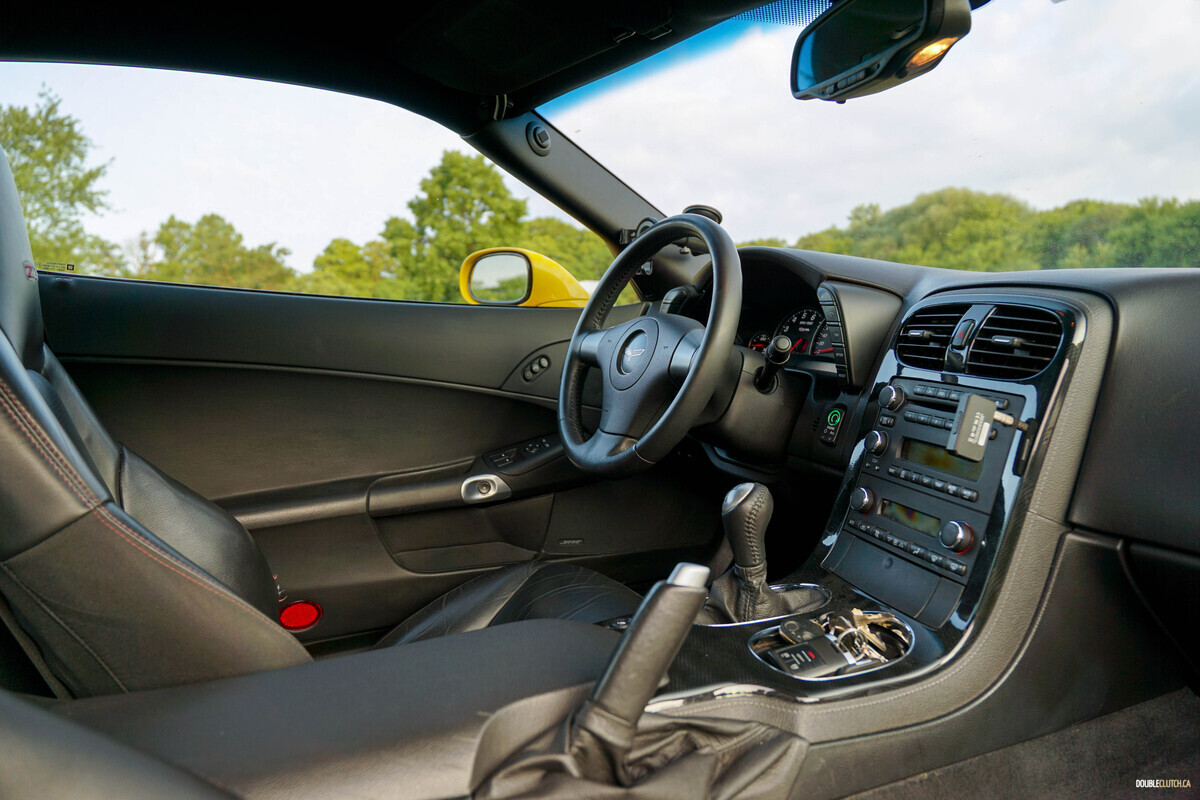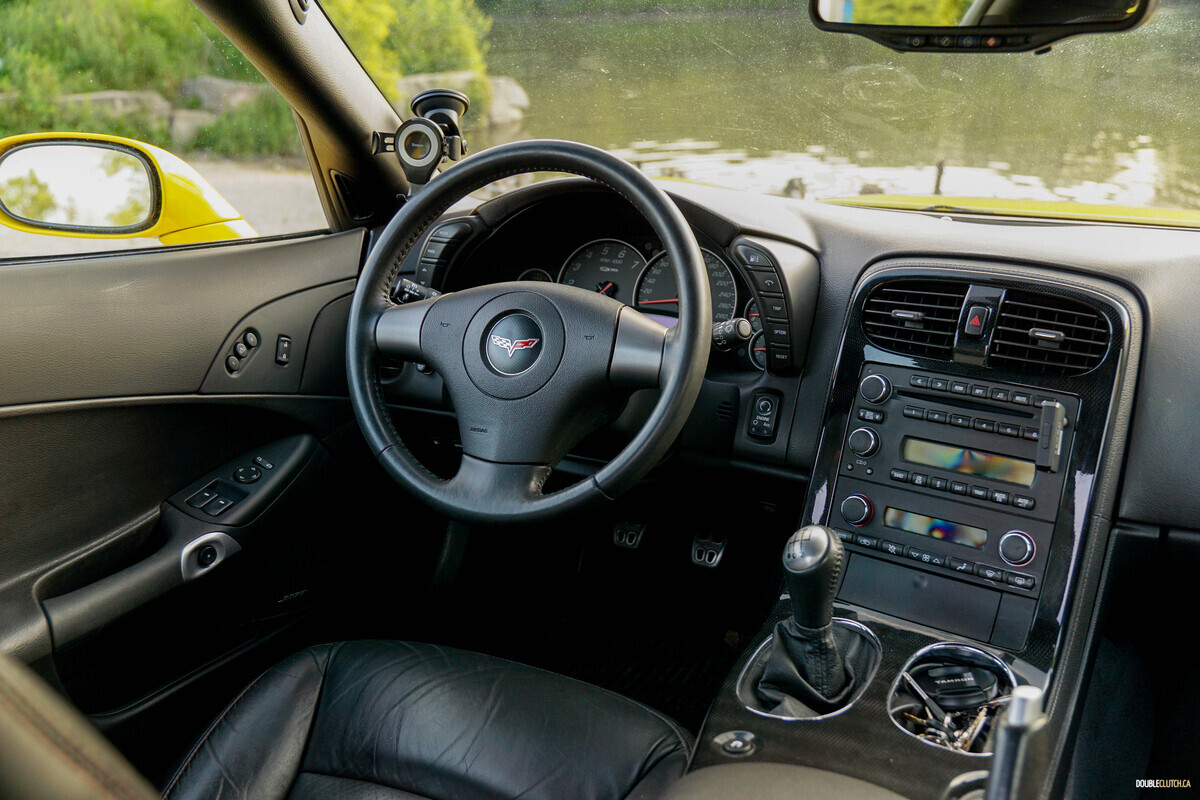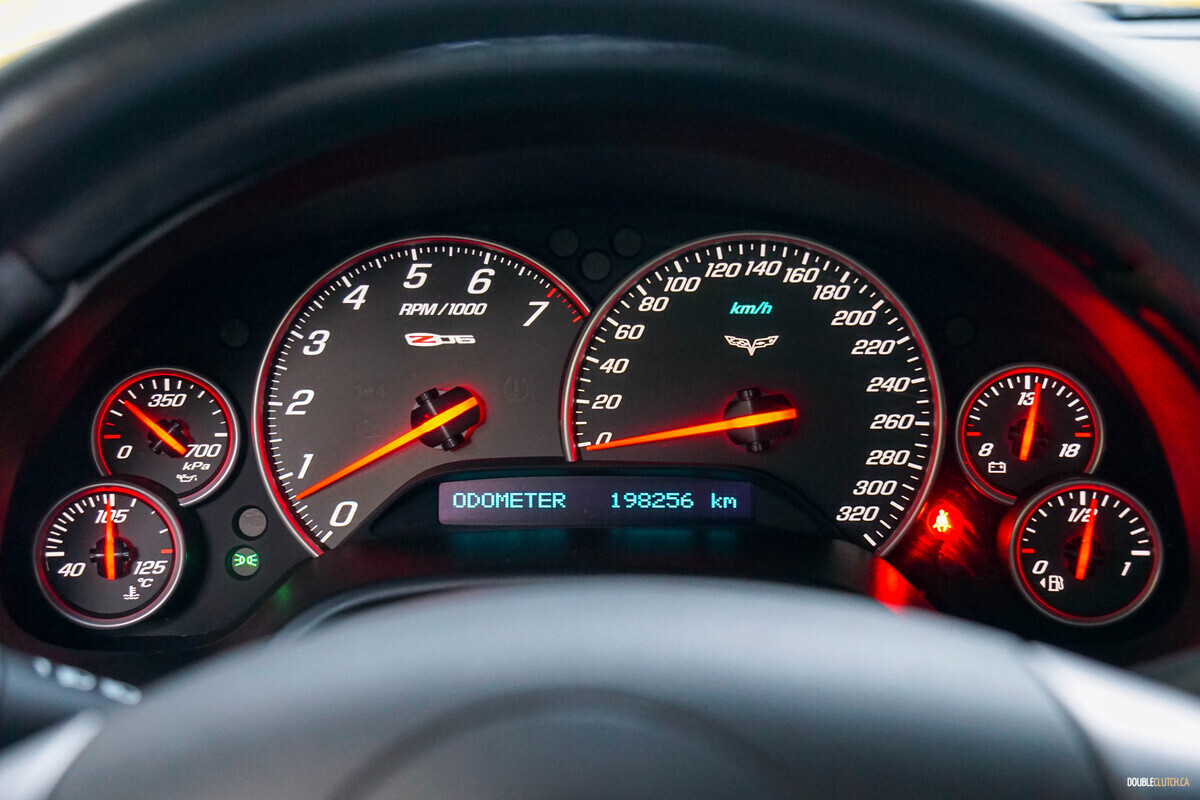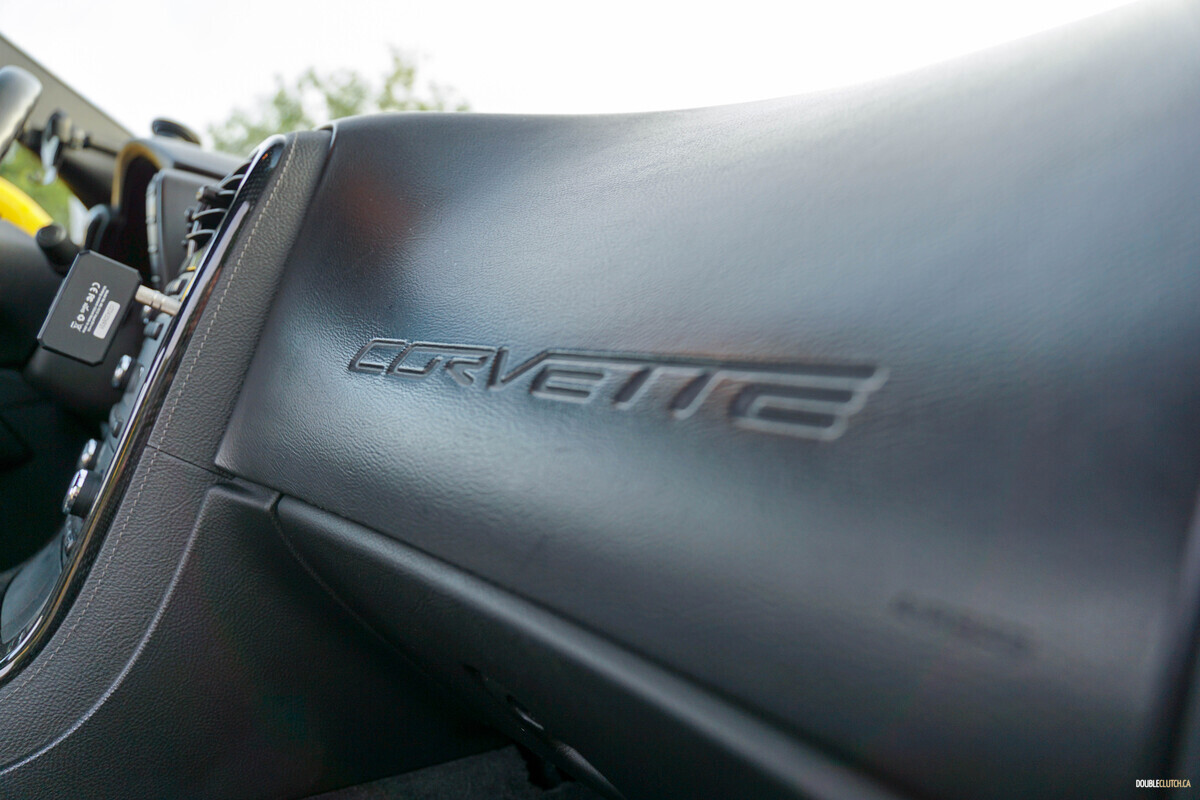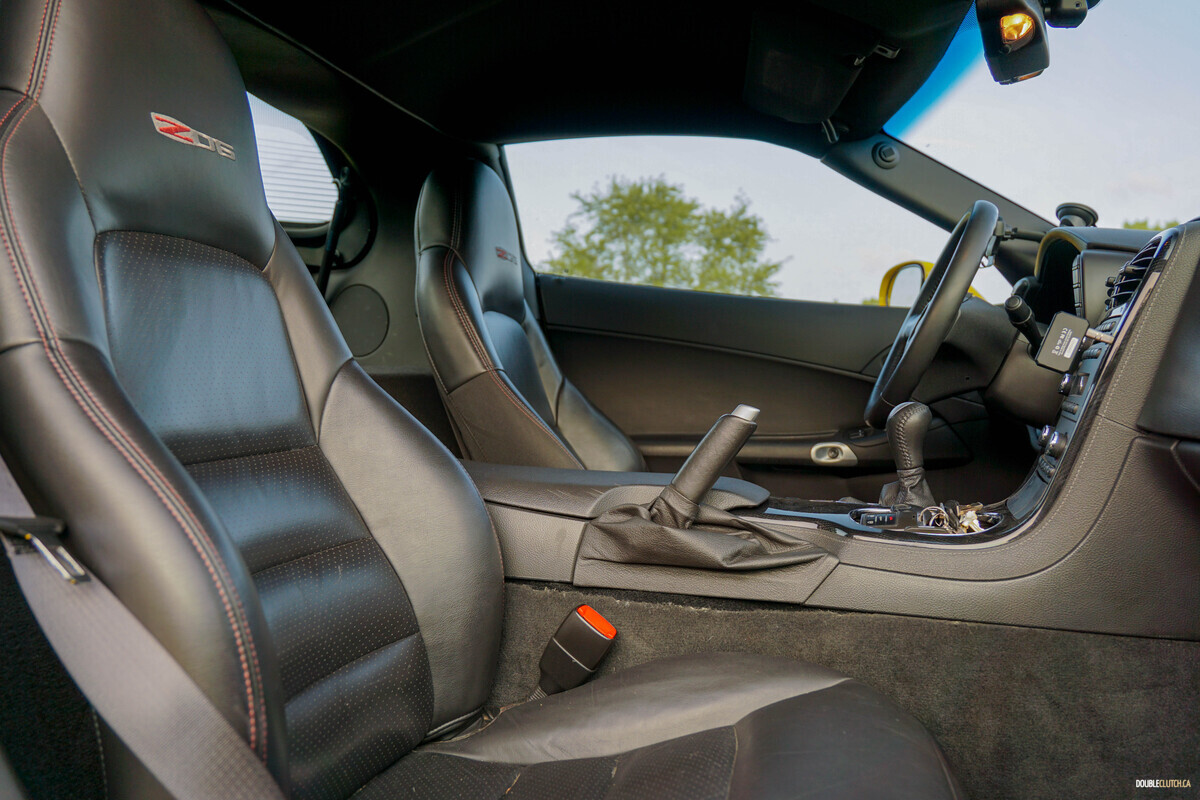When Chevy resurrected the Z06 badge for their highest-performing Corvette in back in 2001, it was kind of a big deal. It was a Corvette that could stand up to the Dodge Viper, without compromising what made the Corvette so good, and without really breaking the bank, either. I’ve previously covered that car and I loved it, but one of the things I (deliberately) neglected to mention is that it’s kind of overlooked next to the much faster car that followed it. This week, we are looking at that car: a 2008 Chevrolet Corvette Z06.
The 2000s saw the dawn of a modern horsepower war. Exotics like the Ferrari Enzo and Porsche Carrera GT were thinly veiled race cars. Sports sedans like the BMW M5 and Mercedes-Benz E55 AMG were rapidly jumping off the deep end with crazy tech, and silly amounts of power. On our side of the pond, Dodge rolled out its first all-new Viper in more than a decade, now with an even more comically huge engine, and 500 horsepower.
The C6 Corvette was already a substantial jump in performance over the C5, so to both differentiate itself from the base Corvette and to answer to the rest of the world, the Corvette team went absolutely nuts developing a Z06 for a new era in a mad, mad world. I’ve always kind of personally preferred the C5 Corvette, and I like that it’s an underdog next to the much-hyped C6. But when our own editor-in-chief Ben So offered me the chance to evaluate his personal C6 Z06 and see if it really is that much better, I couldn’t say no. It would’ve been rude.
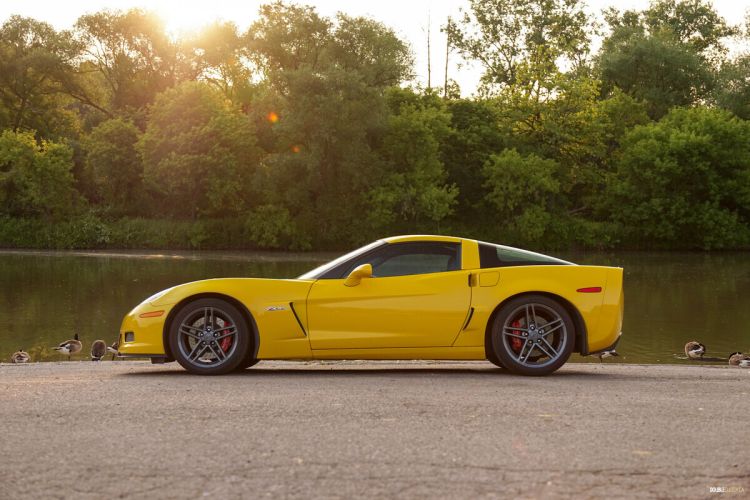
Right out of the gate, the Z06 is visually quite different and far more muscular than the base Corvette, with wider fenders to house wider wheels and fat rolling stock, encircling massive brakes with PBR calipers. The rear end gets a larger lip spoiler and the front end also gets a lip spoiler, neatly tucked underneath a larger intake with a now-signature air duct at the leading edge of the hood. It all coalesces into a car that looks positively menacing, and the screaming bright Velocity Yellow paint gives off the same energy as vibrantly colored venomous toads. Don’t mess with this.
The Z06 is definitely no toad, as it is equipped with all the weaponry of an apex predator under its warning-coloured skin. The front fenders are carbon fiber and cut open with vents for the giant brakes, further inward you’ll find a magnesium front subframe, and featherweight balsa wood floors, all bolted to a bespoke aluminum frame. A lot of this stuff is even more exotic than what was on the Le Mans-winning C6.R race car.
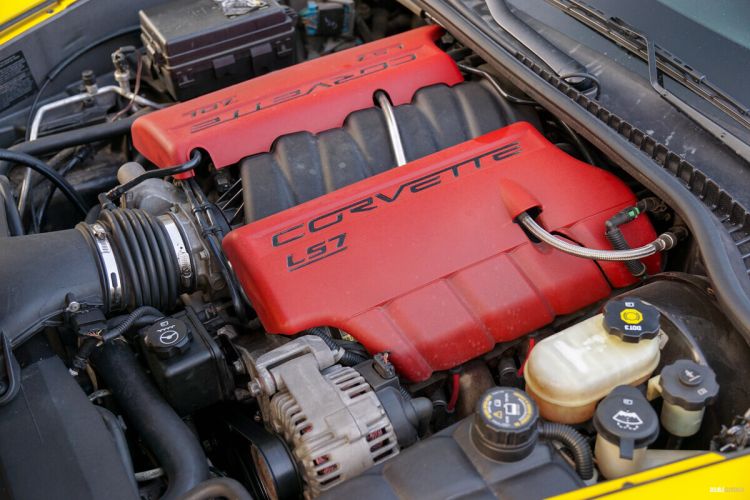
Just like that race car, the Z06 is fitted with a 7.0-litre V8 engine, dubbed the LS7, and has become a living legend on its own. It was and remains to date, the highest-revving and most powerful naturally aspirated pushrod production V8 ever built, making 505 horsepower — five more than the Viper at the time — with a manic 7,000 rpm redline, and a meaty 470 pound-feet of torque. I could go into lots more detail about this miracle of a motor, but I’ll just summarize by saying it’s really not far removed from the race engine; titanium rods, machined heads, forged and balanced crank, dry sump oiling … all that good stuff.
Now here’s where things get weird. For all this race-ready hardware and intimidating presence, the Z06 is surprisingly docile. The seats are comfortable and the headrests are pillow-soft, the driving position is excellent, visibility is terrific, the sound system isn’t bad, and the climate control works really well. It’s not even that loud. It may look like a venomous, steroid-addled cheetah, but it’s got the demeanor of a grizzly bear that thinks it’s a golden retriever. He’s such a good boy, he just doesn’t know his own strength, and you really have to be mindful of that.

I’m really into the noises some cars make when they start. The vast majority of cars are pretty anonymous, but some are quite distinct, and it really tickles me. This motor is distinct. A press of the start button triggers a loud and slow cranking starter; it sounds big, straining to turn over this huge beast of an engine. It eventually fires to life with a lazy rrr-woof, before settling into an incredibly deep baritone grumble that you feel in your chest.
It’s intimidating because you can hear and feel how much power you’re playing with, but it’s lazy and relaxed, very much akin to what you might expect of a loosely domesticated pet bear. But just like with a pet bear, even if he is such a good boy, there is that looming threat in the back of your mind that this is a bear. It’s an incredibly powerful animal that possesses strength that’s hard to comprehend. It seems chill until it casually moves a boulder like it weighs nothing.
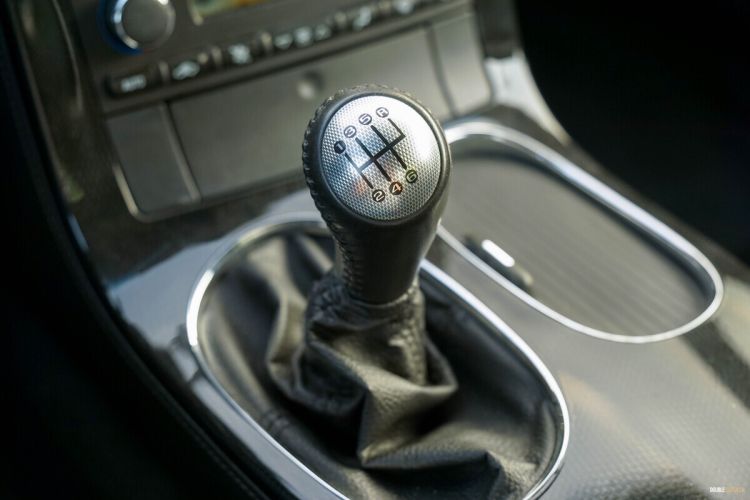
Modern turbo engines can be really flexible and produce silly amounts of torque, but the LS7 engine is a flawless example of the old adage that there’s no replacement for displacement. What’s impressive about this engine isn’t just the sheer amount of torque, but how perfectly linear and effortlessly said torque is delivered. It’s so flexible that it defies belief, and it masks the intergalactic long gearing; a quick rip through the first three cogs will have you going over 200km/h. You hardly ever need to shift, which is a bit of a shame as the shift action is crisp and light, a sharp improvement over the C5.
Also improved over the C5 is the vastly sharper chassis. It may be a bear, but bears are actually startlingly agile (fun fact: a grizzly can almost keep pace with a greyhound). The front end is much tighter, the steering is far more precise, and it doesn’t get unnervingly light at speed like its predecessor. The rear end also is a marked improvement, as it is no longer scary. See, the C5 Z06 had a distinct tendency to wander side-to-side under full power, and the C6 dials out 90 per cent of this, but it’s not completely gone. After all, it’s still a Corvette.

It may be beholden to the traditional Corvette lateral leaf spring rear suspension design, but the wider track and tuning tweaks make America’s sports car much more confidence-inspiring to drive fast. There’s so much mechanical grip that it’s almost unnerving. I attempted flirting with its limits via some moderate buffoonery and it just refused to let go. Even with the traction control off, you have to be driving this bear-dog like a gorilla to break traction. I had heard these cars have a reputation of being difficult to drive, but I only saw the opposite on the street. Grip, balance, and transient behaviour were terrific in my time with it.
It’s one of the few cars I’ve ever driven whose performance envelope feels totally underutilized on the street — which is bizarre, because it’s an excellent street car. It’s not overly loud, the ride is comparable to any more sophisticated modern sports car, its slick shifter and eminently flexible drivetrain makes it easy to drive, it’s even fairly easy on gas, and the cargo space is astonishingly good. You know, like a Corvette.
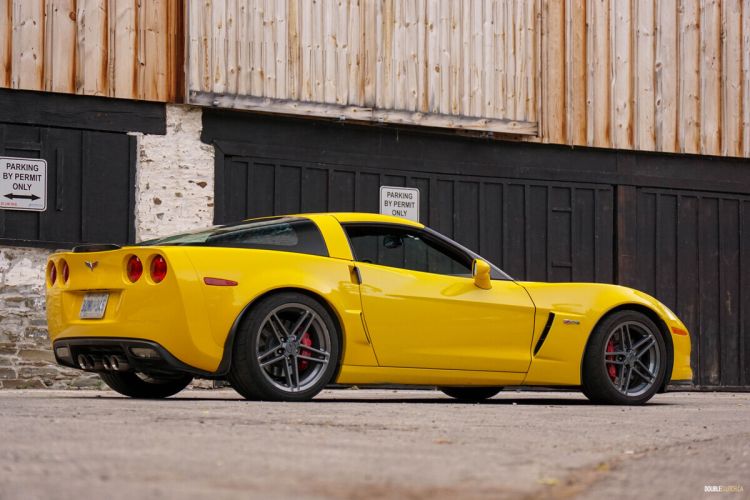
But unlike other Corvettes, it’s so ridiculously fast that it feels wasted. You can have fun with it, but you’ll never be full throttle for more than a few seconds at a time, and you’ll need to be going very extra-legally quick to even begin approaching its handling limits. It’s perpetually slightly grumpy at low speeds, barely tolerating plodding around, nudging you to play with it. And when you do, it really comes alive.
It’s so fast. I drive a lot of fast cars in this line of work, so please take it to heart when I say this car is alarmingly quick. The long-travel throttle seemingly goes on forever, and there’s just more and more power, and it doesn’t stop, pulling manically to its absurd 7,000 rpm redline. It sounds so, so good doing it, too — this may as well be the sound that sound editors use when dubbing in race car noises in movies. It’s such a distinctly American, eight-cylinder mechanized rage, not unlike a furious bear with the heart of a titan. This engine is so good.
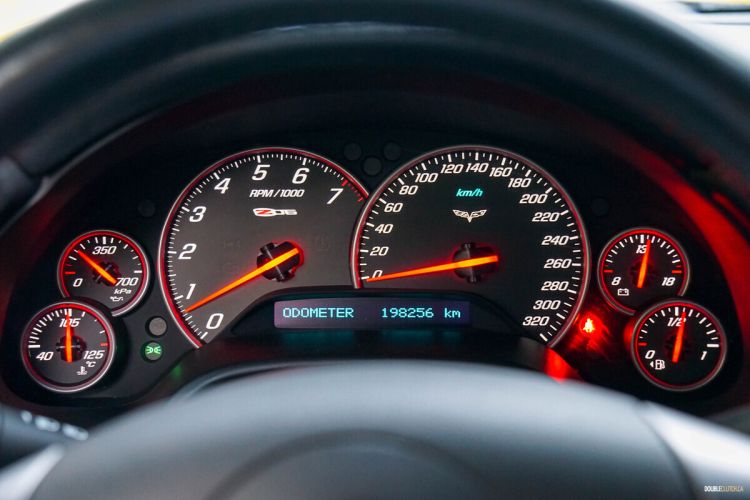
Very much the first time you drive something super high revving like a Honda S2000, it’s bewildering how high it revs. You hear the engine rev up to seven grand, it sounds like it’s ready to blow, and then defies expectation and keeps going to nine thousand. The LS7 in the C6 Z06 pulls the same auditory trick, sounding like it’s maxed out, and then it keeps going. Extensive use of exotic materials in the LS7 means it can rev like an overhead-cam engine, but its gigantic displacement means it doesn’t have to, ever. Awesome stuff.
I came away from the 2008 Chevrolet Corvette Z06 with conflicted feelings. I don’t like yellow cars, but I loved it here. I typically don’t love cars that are too fast to enjoy on the street, but I loved its walk-softly-and-carry-a-comically-big-stick attitude. I loved its vicious styling and gentle demeanor. I love that General Motors figured out how to imbue a terrifying grizzly bear with the personality of a golden retriever. I love that it’s a great daily and a goddamn race car. It’s such an incredible achievement, and it’s still a remarkable supercar bargain. It’s a weird, rolling juxtaposition of a car, and I absolutely adore it.
See Also
Enthusiast’s Corner: 2002 Chevrolet Corvette Z06
2021 Chevrolet Corvette Stingray
Tire Test: Goodyear Eagle F1 Supercar 3 on our C6 Corvette Z06

